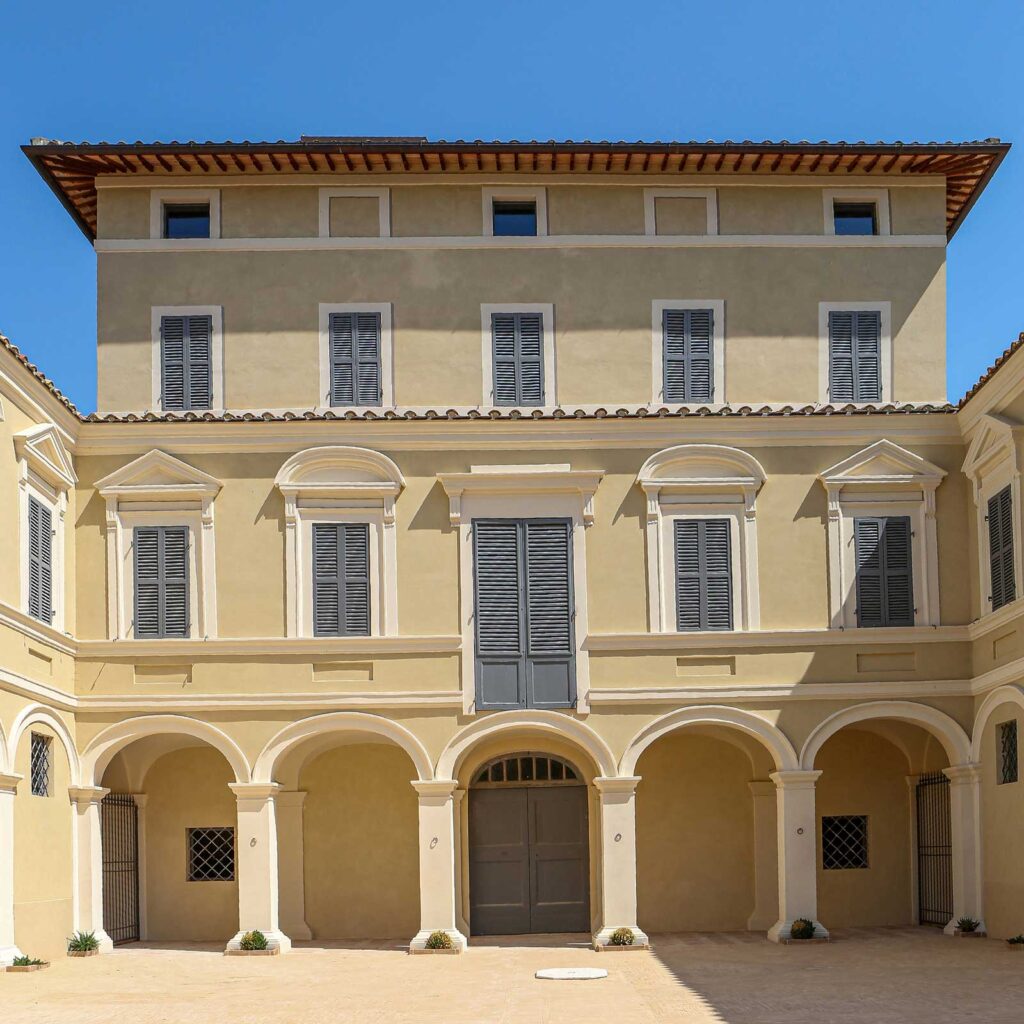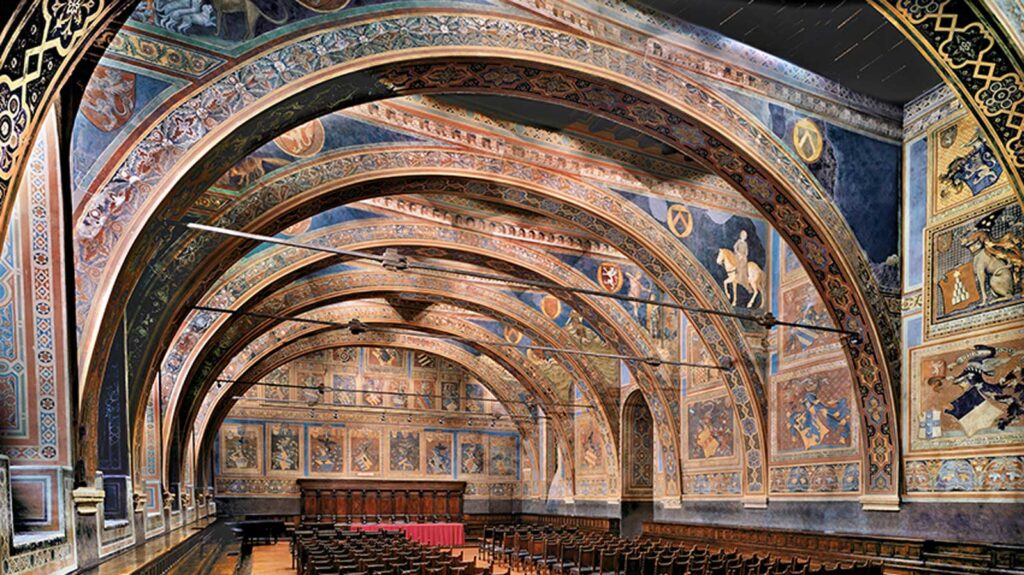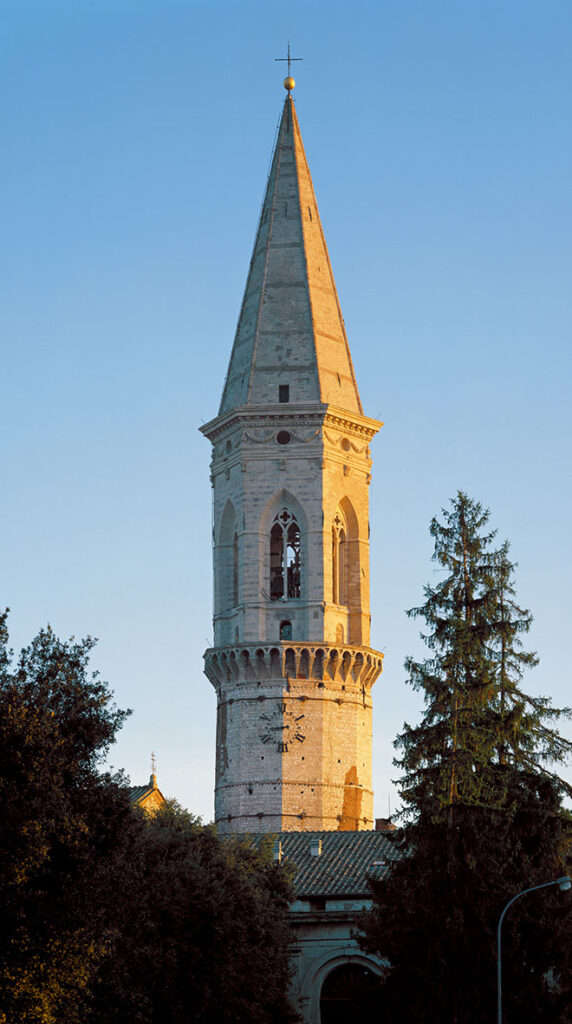Perugia in the center of Italy.
Villa Pucci Boncambi is located a few kilometers from Perugia, the economic and cultural center of Umbria. In a few minutes by car you can reach both the international airport of Umbria (S. Francesco di Assisi) and the most populous and richest city in Umbria.

Beautiful Perugia is the capital of the Umbria region. An important city in the Etruscan period, it turned out to be fundamental for the State of the Church during the early Middle Ages, a period in which Pope Innocent III showed the same great propensity towards the same, so much so that he died there in 1216.
Places which, due to their strategic position and local resources, attracted a lot of attention and gave rise to innumerable struggles to conquer their dominance: they passed from the Visconti duke, to the State of the Church, to later pass under the Baglioni family and then arrive at the dominion of the Pope .
On 14 September 1860 Perugia was liberated by the army of Piemonte, forcing the Swiss army to take refuge in the Rocca Paolina, and annexed to the Kingdom of Sardinia, then the Kingdom of Italy.
And it is precisely by visiting the city that one browses through so many different layers that belonged to as many historical periods.
It begins by crossing the Rocca Paolina, one of the symbols of power of the Pope, built between 1540 and 1543 by the will of Pope Paul III Farnese, hence the name. Over the years it underwent partial destruction and was completely destroyed after the unification of Italy: only the majestic underground remains, which can be visited via a system of escalators that lead up to the heart of the city.

Crossing the beautiful and crowded Corso Vannucci, full of shops, lights, refreshment points, street artists and characteristic cafes, we stop to visit to the National Gallery of Umbria, which houses one of the most important art collections of Italy.
The more than 3,000 works unfold in forty rooms, a tower and a chapel – for a total of 3,500 square meters of exhibition – inside the Palazzo dei Priori, one of the most important buildings in Italy for its clear Gothic architecture.
Inside, paintings, ceramics, sculptures, jewelery and fabrics. The visit of the museum begins by crossing the thirteenth and fourteenth centuries with the frescoes by Benedetto Bonfigli in the chapel of the Priors and the Madonna with Child by Duccio di Buoninsegna, to then continue in the late Gothic with Gentile da Fabriano and continue in the Renaissance with unique works by Beato Angelico, Benozzo Gozzoli and Piero della Francesca.
In room no. 13, the masterpiece of Piero della Francesca: the polyptych of Sant’Antonio.
The work, whose realization can be dated between 1467 and 1469, marks the transition from tempera painting to oil painting, which Piero della Francesca had approached after coming into contact with Flemish art.
The iconography contained therein is linked to the Franciscan order: in the central register, Sant’Anton io da Padova, San Francesco di Assisi and Santa Elisabetta d’Ungheria are depicted together with the Madonna and Child and Saint John the Baptist. In the lower part, the subjects of the predella tablets are the miraculous events attributed to the three Franciscan saints.
We continue with the monographic rooms dedicated to Pinturicchio and the master Perugino: of the latter, the Gallery boasts the richest and most complete collection in the world.
Inside the Raffaello’s room, we find copies and works of artists inspired by him.
In the last part, the centuries between the seventeenth and twentieth centuries are crossed with the works, among others, of Orazio Gentileschi, Pietro da Cortona, Gerardo Dottori and Alberto Burri.
Once get out, we reach Piazza IV Novembre where the Fontana Maggiore stands, built between 1278 and 1280 by Nicola and Giovanni Pisano.

It is composed by two superimposed concentric basins, decorated with 50 bas-reliefs and 24 statues.
In the lower basin, the months of the year are shown in bas-relief with the signs of the zodiac, the Bible, scenes from the agricultural tradition, the liberal arts and the history of Rome, while the upper basin is made up of twenty-four slabs separated by statues representing sacred, allegorical and historical.
Above the two basins, a bronze cup decorated with three nymphs representing Faith, Hope and Charity.
At this point, a stop on the steps of the Gothic Cathedral of San Lorenzo is a must, from which it is possible to have an overview of the beauty of the city center and perceive its vital atmosphere, also determined by the many students who flock there the ways.
Perugia is in fact the seat of one of the oldest universities, the Università per Stranieri” for the foreigners students and the “Pietro Vannucci” Academy of Fine Arts.

Among the main entertainment events, it is worth mentioning “Umbria Jazz”, the most important Italian jazz music festival born in 1973, which has welcomed the many jazz music enthusiasts since mid-July, and Eurochocolate, the most famous international chocolate festival which, since 1994, normally takes place in October and welcomes gourmands from every region.
Precisely for this reason, before entering the walls, the “Casa del Cioccolato” and the historical museum of Perugina are worth a visit.
In short, an all-round city, with streets and alleys to be discovered, where art, history and beauty predominate over everything.